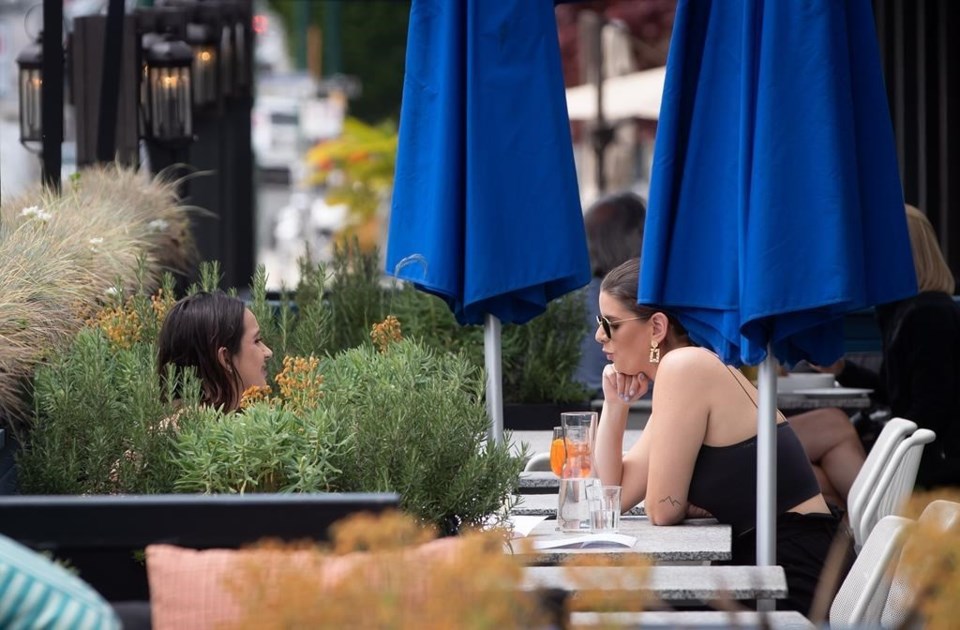It’s summer and the patios are opening across parts of Ontario and elsewhere in Canada as COVID-19 safety measures ease.
This follows stores, campgrounds, daycares, hairdressers, schools and more, depending on where in Canada you live.
But reopening can come with a price: parts of the U.S., for example, are seeing a resurgence in coronavirus cases after local businesses emerged from lockdown.
Here’s how to walk the line between enjoying some of the new services that are available, and keeping yourself and others safe.
1. Decide your risk tolerance
Some places are inherently more risky than others. But what you decide is an acceptable risk might not be what someone else decides.
“Part of that is an individual decision because risk tolerance is very, very different between individuals,” said Dr. Shelley Deeks, chief health protection officer at Public Health Ontario.
“For COVID-19, we’re still at the stage where there is no therapy and there’s no vaccine. So the only way to prevent it is through public health measures.
“We also know that certain people are at increased risk, including people that are older, as well as people with chronic medical conditions. Risk tolerance is different among individuals but also their risk of disease will be different. So all of those components need to be taken into account.”
Aside from your own personal health risk, you may also want to consider who you’re around. As an essential worker, Deeks continues to go into work, she said, but while she is in contact with members of her immediate family, she stays far away from her elderly parents who are at high risk of infection. “I want to maintain social distance because I am at increased risk of exposure.”
2. Look at your local conditions
If you’re in a community that has very few cases, your risk calculation might change, said Stephen Hoption Cann, a clinical professor of population and public health at the University of British Columbia.
“Just looking at your community or your province, what are the numbers in terms of infections? Some areas are quite low, so your risk is much lower,” he said. “But some areas — there is still quite a bit of risk there.”
This is why some provinces, like Ontario, have chosen to reopen different areas at different times – the risk can vary.
“As we open, we will open gradually and do it as safely as possible,” Deeks said.
“If you’re a person over 60, if you have some health conditions, you might want to take more precautions or maybe not be going to the restaurant right away,” Hoption Cann said. “You have to look at what’s going on in your community. Are there any outbreaks or are the new infections in decline, so you’re getting an idea of your individual risk.”
3. Avoid crowds
This is where we get into the standard advice that public health practitioners have been saying for a while.
“It’s really about the concentration of people,” Deeks explained. “If you can maintain social distancing, then that is a less risky situation than if you had a dense group of people in a small space. Outdoor spaces with social distancing would be less risky than crowded indoor spaces.”
This is why newly reopened indoor spaces, like some shops, often limit the number of people who can enter at one time, she said. Many provinces have also set limits on how many people can gather in a place at a given time.
4. Keep your distance
Even in less-crowded spaces, it’s important to keep your distance, Deeks said. So if you’re at a restaurant patio, you will want to stay at least two metres away from other patrons.
The other advice, like washing your hands frequently, not touching your nose and mouth with unwashed hands, and wearing a mask, still applies, said Hoption Cann. Staying home if you’re sick is very important too, according to Deeks.
You can’t drop your guard yet, Hoption Cann said.
“Even though things are opening up, it doesn’t mean COVID-19 has gone away.”
- Global News



